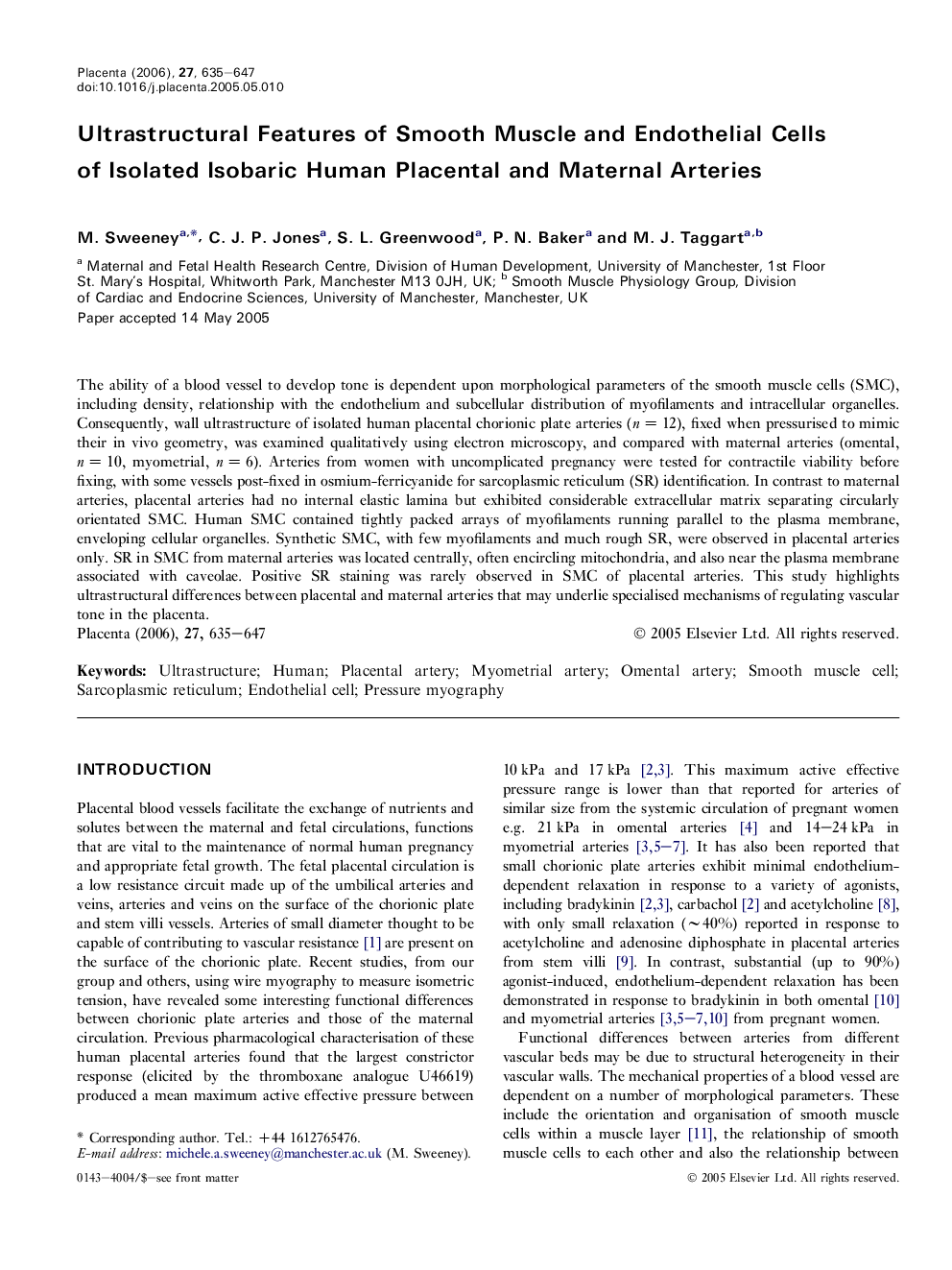| Article ID | Journal | Published Year | Pages | File Type |
|---|---|---|---|---|
| 2790261 | Placenta | 2006 | 13 Pages |
The ability of a blood vessel to develop tone is dependent upon morphological parameters of the smooth muscle cells (SMC), including density, relationship with the endothelium and subcellular distribution of myofilaments and intracellular organelles. Consequently, wall ultrastructure of isolated human placental chorionic plate arteries (n = 12), fixed when pressurised to mimic their in vivo geometry, was examined qualitatively using electron microscopy, and compared with maternal arteries (omental, n = 10, myometrial, n = 6). Arteries from women with uncomplicated pregnancy were tested for contractile viability before fixing, with some vessels post-fixed in osmium-ferricyanide for sarcoplasmic reticulum (SR) identification. In contrast to maternal arteries, placental arteries had no internal elastic lamina but exhibited considerable extracellular matrix separating circularly orientated SMC. Human SMC contained tightly packed arrays of myofilaments running parallel to the plasma membrane, enveloping cellular organelles. Synthetic SMC, with few myofilaments and much rough SR, were observed in placental arteries only. SR in SMC from maternal arteries was located centrally, often encircling mitochondria, and also near the plasma membrane associated with caveolae. Positive SR staining was rarely observed in SMC of placental arteries. This study highlights ultrastructural differences between placental and maternal arteries that may underlie specialised mechanisms of regulating vascular tone in the placenta.
